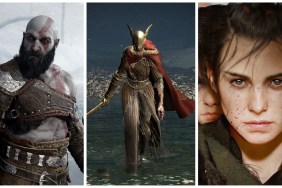Where’s a plumber when you need one?
Even the best of us, once in a while, fall into the nasty trap of fooling ourselves about a product before its release. It doesn’t happen that often in this industry, full of brooding cynical nerds (and proud of it!). After all, no reviewer worth his salt can say he hasn’t been burned before. But…
-
Lots of choice and consequence
-
Touching story with surprising moral issues
-
Paint and thinner mechanics
-
...that could have been more creative
-
Great soundtrack and visual style
-
Some dark, muddy textures and environments
-
Spazzy camera
-
Terrible collision detection
-
Map would be more useful as kindling










